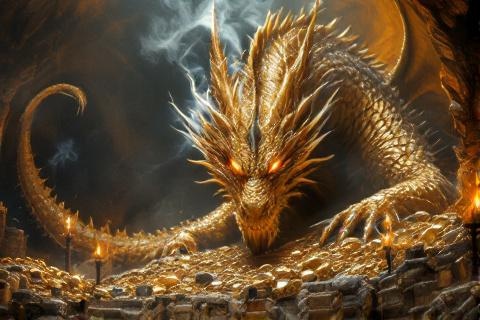
Fire and Fury: Dragons of Tolkien's Legendarium
Exploring the Origins, Powers, and Legacy of Middle-earth's Most Fearsome Beasts
The Birth of Dragons in Arda
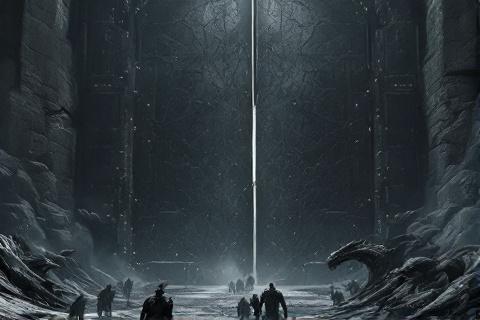
In the depths of Angband during the First
Age, Morgoth, the first Dark Lord, began
his most terrible work of breeding dragons as weapons of war against the free
peoples of Middle-earth. These creatures were bred from
some unknown ancient stock, twisted and corrupted through Morgoth's malice and
dark sorcery into beings of immense power and evil intent. The creation of
dragons represented one of Morgoth's greatest achievements in his attempt to
corrupt and dominate Arda, as these creatures would become some of the most
fearsome servants in his armies.
The earliest dragons, known as cold-drakes, were mighty serpentine creatures
that lacked both wings and the ability to breathe fire. These ancient wyrms
relied on their tremendous physical strength, tough scales, and razor-sharp
teeth and claws to overwhelm their enemies. They were particularly numerous in
the frozen wastes of the far North, where their resistance to extreme cold made
them perfectly suited to Morgoth's fortress of Angband and its surrounding
territories.
Through centuries of dark experimentation and sorcery, Morgoth gradually
developed more powerful variants of dragons, eventually creating the winged
fire-drakes. This evolution marked a significant advancement in their capability
for destruction, as the ability to fly and breathe fire made them nearly
unstoppable in battle. The process culminated in the creation of Ancalagon the
Black, the mightiest of all dragons, whose wings spanned leagues and whose fire
could melt the very stones of mountains.
Glaurung: Father of Dragons

Glaurung, the Father of Dragons, made his first
devastating appearance during the Dagor Bragollach (Battle of Sudden Flame) in
First Age 455. His emergence from Angband struck terror into the hearts of the
Noldor, who had never faced such a creature in battle before.
Though young and not yet fully grown, Glaurung's assault broke the siege of
Angband and scattered the forces of the Elves, marking the
beginning of Morgoth's victory over the Noldor in the north of
Beleriand.
The fall of Nargothrond in First Age 495 demonstrated
Glaurung's full might and cunning. The great dragon led Morgoth's armies against
the hidden city, defeating its defenders and enchanting them with his powerful
gaze. After the battle, he took residence in the halls of Nargothrond, lying
upon its treasures and turning the once-proud Elven stronghold into a place of
dread that none dared approach.
The most tragic chapter in Glaurung's history involved his manipulation of
Túrin Turambar and his sister Nienor. Through his
malevolent power, he caused Nienor to lose all memory of her identity and
engineered the circumstances that led to her marriage to her own brother Túrin,
fulfilling Morgoth's curse upon the children of Húrin
in the most terrible way imaginable. The dragon's cruel manipulation led to one
of the most tragic tales in all of Middle-earth's history.
Glaurung met his end at Cabed-en-Aras, where Túrin, seeking revenge, mortally
wounded him by striking from beneath as the dragon crossed a ravine. In his
death throes, Glaurung's venomous blood poisoned the waters of the river
Teiglin, and his final words revealed to Nienor the truth of her identity and
relationship to Túrin, leading to the tragic suicides of both siblings. The
Father of Dragons thus accomplished Morgoth's will even in death, bringing utter
ruin to the house of Húrin.
Ancalagon the Black and the War of Wrath
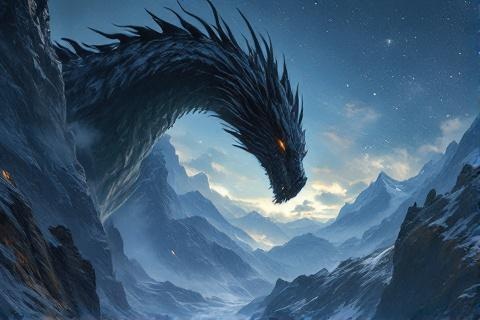
Ancalagon the Black emerged as the greatest and most terrible of all winged
dragons in the history of Middle-earth. Created by Morgoth near the end of the
First Age, he represented the pinnacle of dragon-breeding, with a size that
dwarfed all other dragons before or since. His black scales and massive wings
that blocked out the sun struck terror into all who beheld him.
During the War of Wrath, when the host of the
Valar finally moved against Morgoth, Ancalagon led a great force
of winged dragons in a desperate counter-attack. The sudden appearance of these
flying dragons nearly turned the tide of battle, as even the mighty forces of
Valinor were driven back by their terrible onslaught. The
dragons' attack represented Morgoth's last and most powerful defense against the
Valar.
The final battle between Ancalagon and
Eärendil, who flew in his ship Vingilot with
the power of a Silmaril upon his brow, became one of the
most epic confrontations in the history of Arda. The battle raged across the sky
for an entire day until Eärendil, with the help of the great eagles led by
Thorondor, finally defeated the mighty dragon. This victory marked the turning
point in the War of Wrath.
When Ancalagon fell, his enormous body crashed upon the towers of Thangorodrim,
Morgoth's mighty fortress-mountains. The impact was so tremendous that it
shattered these iron peaks, which had stood as the greatest mountains in
Middle-earth. The destruction of Thangorodrim became a symbol of Morgoth's final
defeat and changed the physical landscape of Beleriand forever.
Dragon-fire and Dragon-spell
Dragon-fire existed in several devastating forms throughout the ages of
Middle-earth, each with its own terrible properties. The most common was the
searing flame breathed by fire-drakes, hot enough to melt even rings of power,
though not the One Ring itself. Some dragons, like
Glaurung, could also produce intense heat without visible flame, while others
breathed cold so severe it could freeze their victims instantly. The varying
nature of dragon-fire made these creatures particularly unpredictable and
dangerous in battle.
The power of dragon-speech extended far beyond mere communication, as dragons
possessed the ability to weave enchantments through their words. Their voices
carried a hypnotic quality that could entrance listeners, making them
susceptible to manipulation and control. This power was demonstrated most
notably in Glaurung's encounters with Túrin and Nienor, where his words carried
the force of powerful spells.
Dragons possessed an innate ability to dominate weaker minds, similar to but
distinct from their power of speech. Through their gaze and presence alone, they
could instill paralyzing fear, cloud judgment, and even implant false memories
or remove true ones. This power worked particularly well against those who were
unprepared or of insufficient will to resist, making dragons formidable
opponents even without physical combat.
Ancient lore spoke of various defenses against dragon-magic and dragon-fire,
though few proved consistently effective. Strong-willed individuals could resist
a dragon's mental dominance, while certain rare materials and enchantments
offered protection against their flames. The dwarves were known to craft special
armor and shields that could withstand dragon-fire, though such artifacts were
rare and highly prized.
Dragons of the Third Age
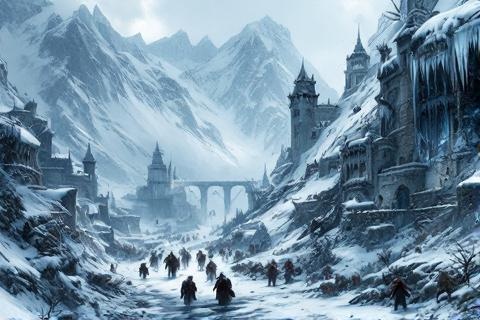
The cold-drakes of the Grey Mountains proved to be a persistent threat to the
dwarves who dwelt there during the Third Age. These wingless
dragons, though lacking the ability to breathe fire, possessed immense strength
and an insatiable hunger for treasure. Their attacks on the dwarven settlements
became increasingly frequent and bold, leading to numerous battles and losses on
both sides.
The most devastating attack by the cold-drakes occurred in Third Age 2589, when
King Dáin I and his second son Frór were slain by a great cold-drake at their
gates. This tragic event forced the surviving dwarves to abandon their ancient
halls in the Grey Mountains, marking a significant turning point in the history
of Durin's Folk. The majority of the survivors relocated to
the Iron Hills and Erebor, forever changing the distribution of
dwarven power in the North.
Between the First and Third Ages, several notable dragons emerged to trouble the
free peoples of Middle-earth. These included Scatha the Worm, who terrorized the
Éothéod until he was slain by Fram, and various unnamed dragons who accumulated
vast hoards in the Withered Heath. While none matched the power of their First
Age predecessors, these dragons maintained their reputation as some of the most
dangerous creatures in Middle-earth.
Smaug: Last of the Great Dragons

Smaug's attack on Erebor in Third Age 2770 demonstrated the
devastating power that even a single dragon could wield. The fire-drake
descended upon the Lonely Mountain with terrible fury, driving out the dwarves
and destroying much of the nearby city of Dale. His assault was so swift and
overwhelming that the dwarves had little chance to mount an effective defense,
leading to their exile and the loss of their greatest kingdom in the North.
Unlike many of his predecessors, Smaug combined physical might with exceptional
intelligence and cunning. He was smaller than the great dragons of the First Age
but possessed qualities that made him uniquely dangerous, including scales as
hard as diamonds and an intimate knowledge of dragon-lore. His ability to detect
the slightest sound or movement, combined with his acute sense of smell, made
him an almost perfect guardian of his stolen hoard.
Smaug's conversations with Bilbo Baggins revealed
both his intellectual prowess and his fundamental weakness: pride. The dragon
displayed remarkable wit and perception, easily understanding riddles and
detecting the presence of the invisible hobbit through scent and reason.
However, his vanity led him to engage in these conversations rather than
immediately attacking, and his boasting about his impenetrable armor revealed
the one vulnerable spot in his diamond-hard scales.
The dragon's demise came through a combination of his own overconfidence and the
remarkable shot of Bard the Bowman. Smaug's weakness, a bare patch on his left
breast, was exploited by Bard using the black arrow, an heirloom of Dale. The
dragon's death throes destroyed Lake-town, but his fall marked the end of the
great dragons in the northern regions of Middle-earth, ushering in a new age
where such creatures would fade into legend.
Legacy of the Dragons
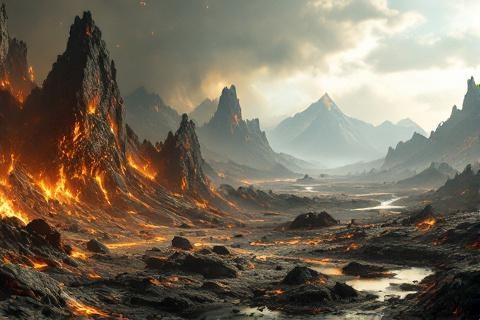
The presence of dragons permanently altered the landscape of Middle-earth, from
the breaking of Thangorodrim by Ancalagon's fall to the desolation around Erebor
caused by Smaug. Their lairs often became places of dread that remained
uninhabitable for centuries after their passing, marked by the lingering effects
of their evil presence and the devastation caused by their flames or
cold-drakes' frost.
Dragons played pivotal roles in shaping the histories of the Free Peoples,
particularly the Elves, Men, and Dwarves. The
Noldor's realms in Beleriand fell largely due to Morgoth's dragons, while the
dwarves lost several of their greatest kingdoms to these creatures. These
experiences led to lasting changes in how these races built their defenses and
organized their societies, with dragon-attacks remaining a feared possibility
for millennia.
Ancient prophecies spoke of dragons throughout the ages of Arda, including
predictions about their role in the world's final battles. While most of the
great dragons perished in the First and Third Ages, legends persisted that some
still slept in the far northern wastes, waiting for the right moment to emerge.
These prophecies contributed to the ongoing vigilance maintained by the northern
kingdoms against the possibility of dragon attacks.
Many artifacts touched by dragon-fire or associated with dragon-hoards gained
special properties or historical significance. The treasures of Erebor, long
touched by Smaug's presence, carried both material and symbolic value for the
dwarves. Dragon-helm of Dor-lómin and other ancient artifacts demonstrated the
craft and ingenuity of those who sought to defend against these mighty
creatures, serving as reminders of both the terror and triumph in Middle-earth's
long struggle against dragons.
